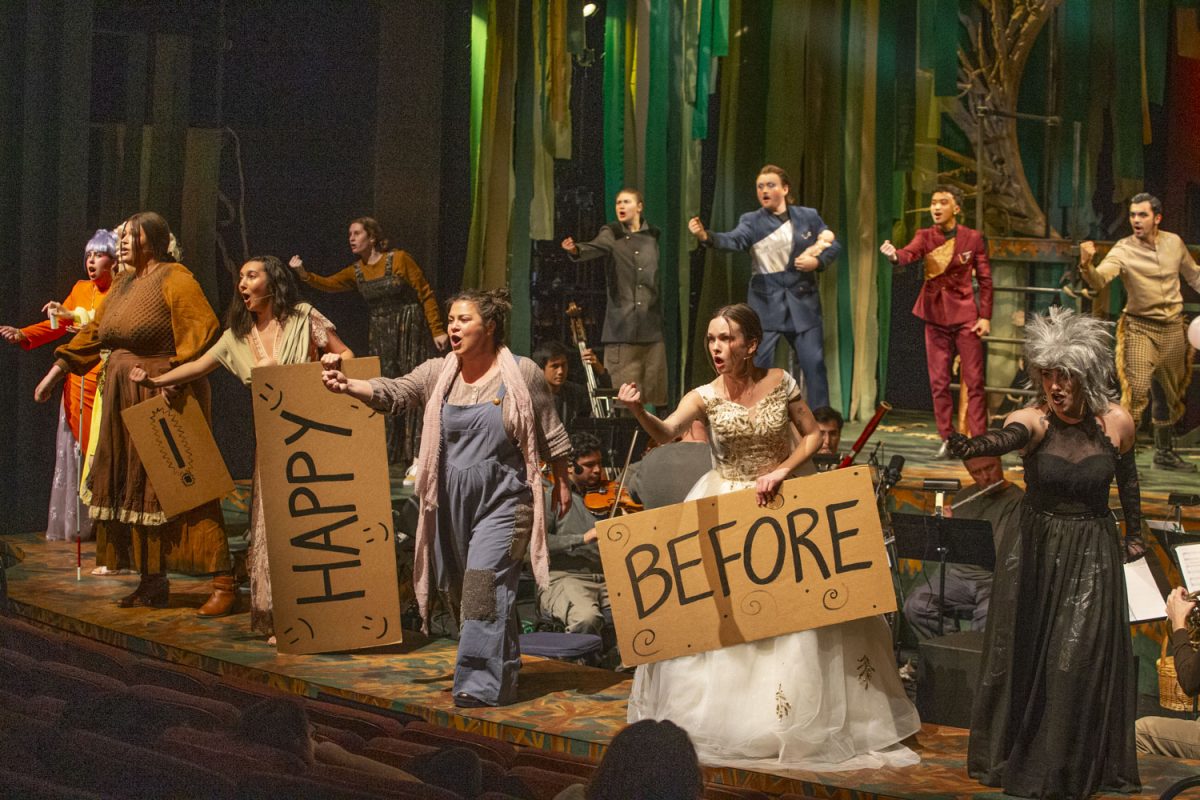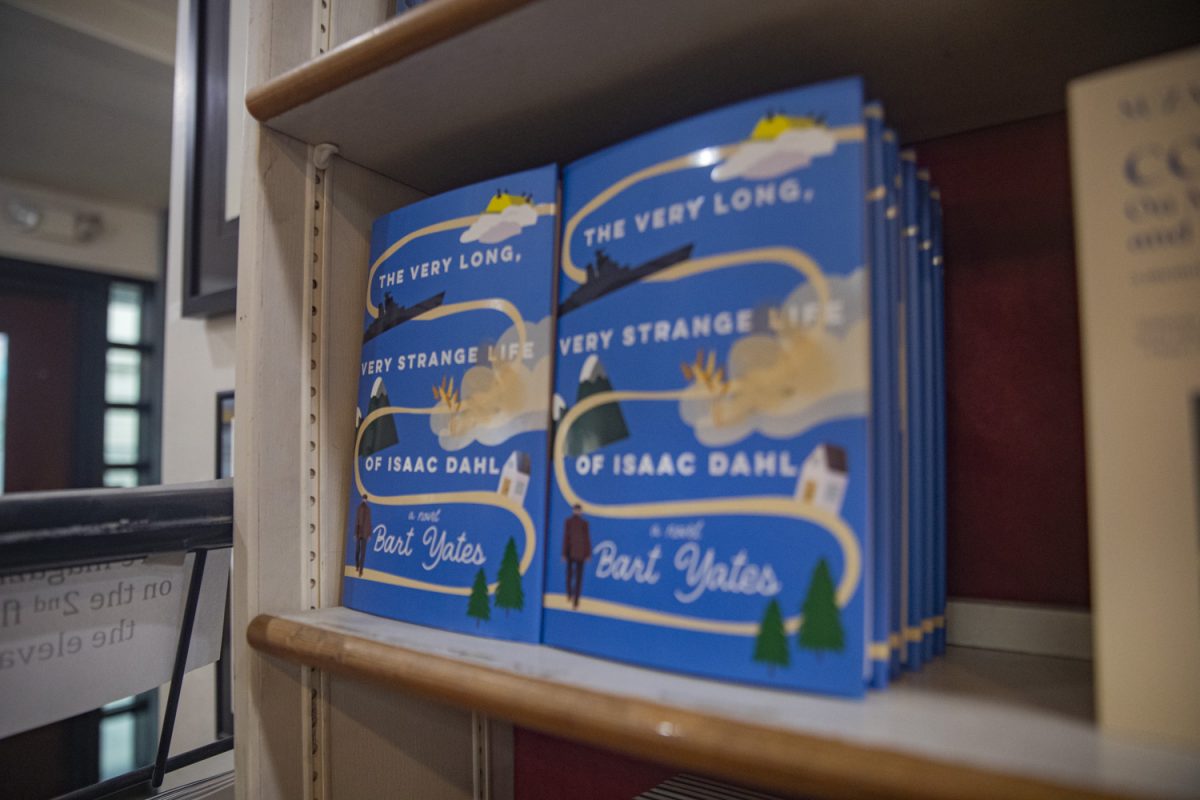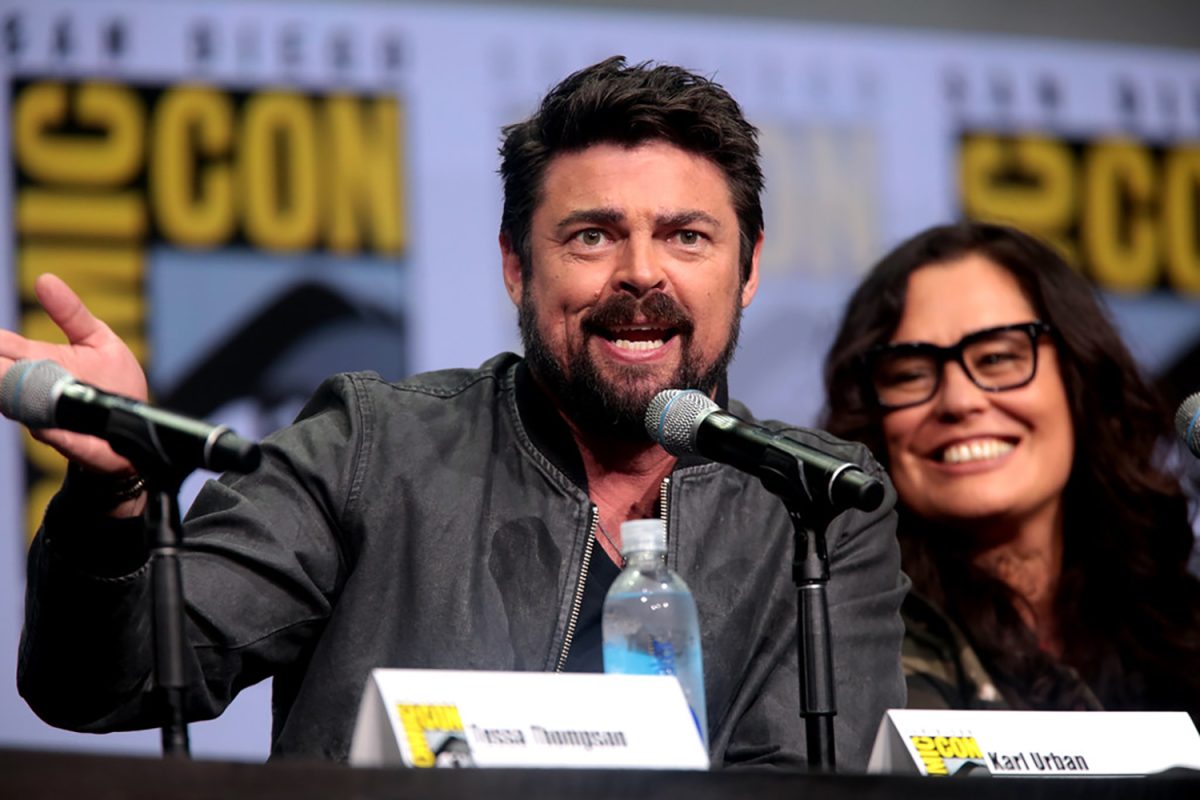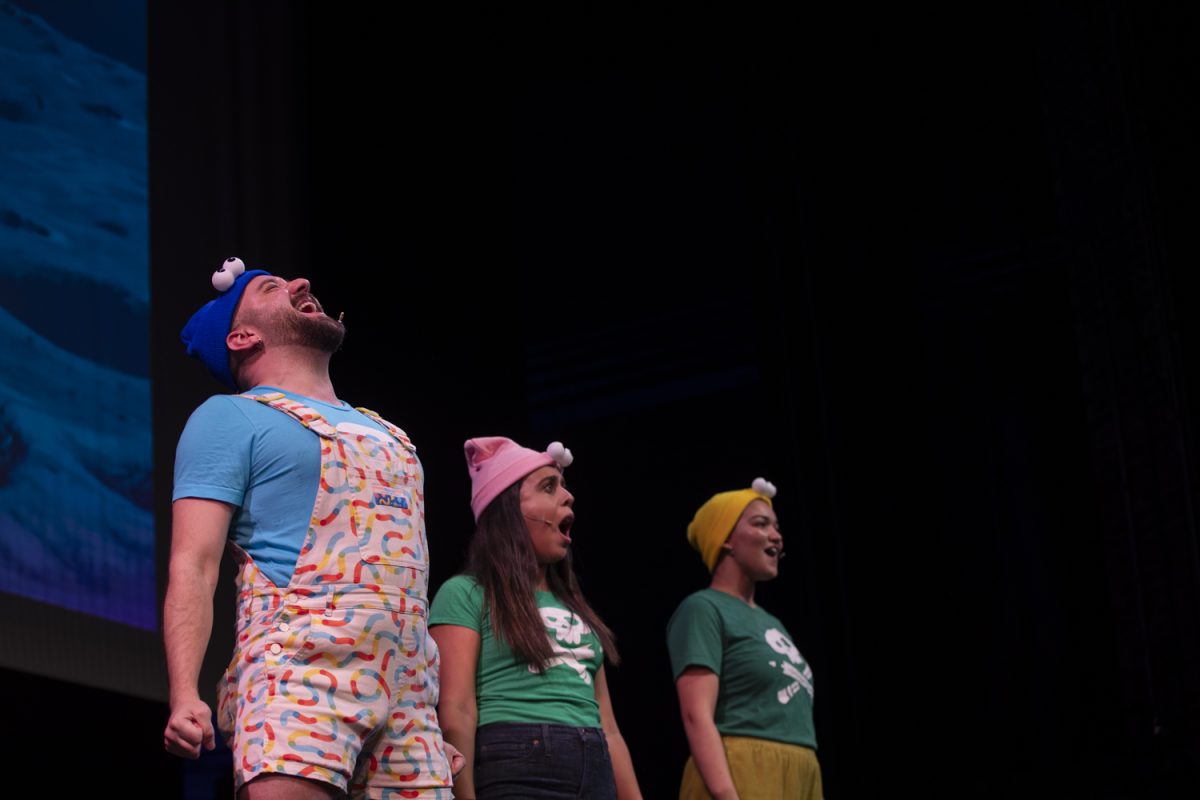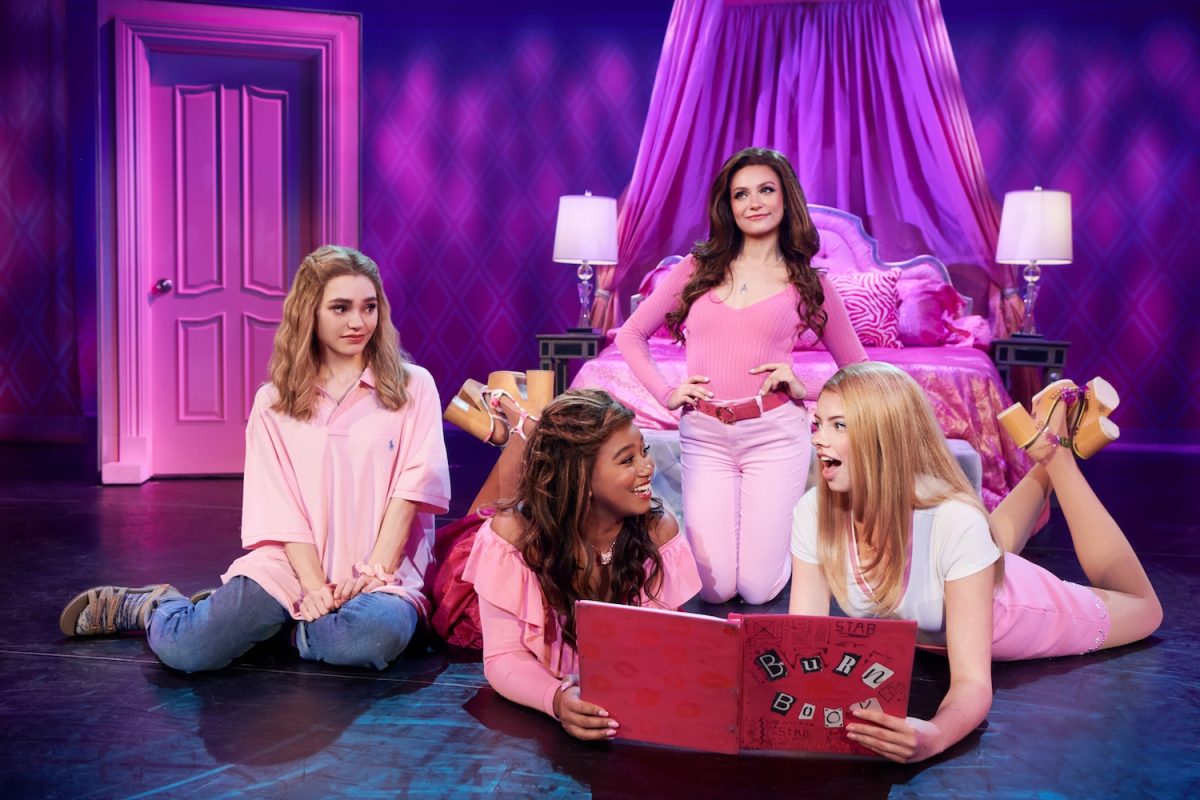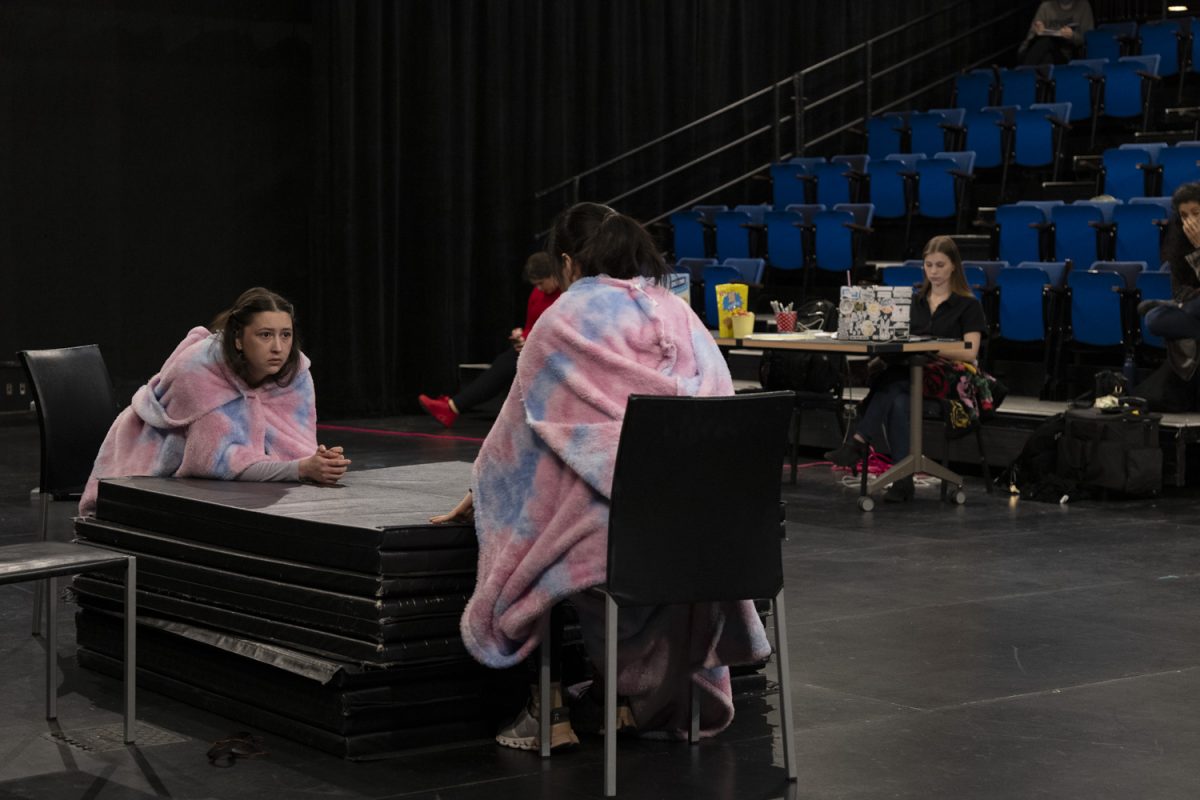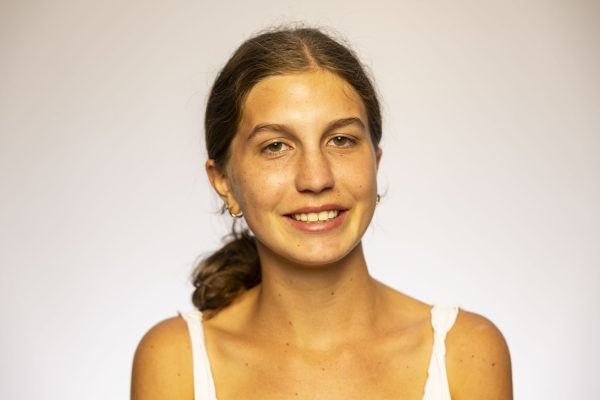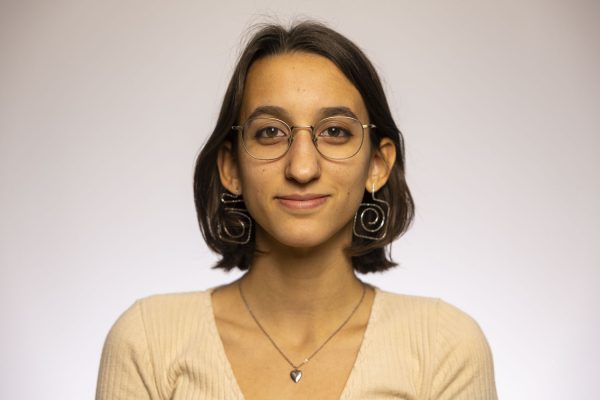Since its premiere in 1986, countless interpretations of Stephen Sondheim’s play “Into the Woods” have seen stages around the world and, for the past six weeks, the University of Iowa’s cast and crew have been developing their rendition.
But the beginning of the production’s journey didn’t start with the first rehearsal or auditions. It began with a conversation in Vermont during July 2023 in which UI Director of Theater Bryon Winn asked his friend and colleague Stephen Thorne if he wanted to direct the university’s version of “Into the Woods.”
Learn more:
“I was like, ‘I can’t direct a musical.’ I’ve never directed; I’m primarily an actor,” Thorne said.
Before taking on this production, Thorne, who graduated from the UI’s acting program in 1997, was hesitant to direct the show. His first and only experience performing Sondheim’s work was in Trinity Repertory Company’s production of Sweeney Todd just a few weeks before Winn’s offer.
In that performance, Thorne realized Sondheim’s overlapping lyrics and seemingly chaotic music were intentional, and it challenged him in a way he hadn’t experienced before.
“I’ve been acting professionally for 24 years, and it was the first time I was like, ‘I don’t think I can do this,’” Thorne said.
Trusting his friendship with Winn and eager for a good challenge, Thorne took on the production.
The cast and crew first met in the UI Performing Arts Annex in late January. They sat in a wide room with plain walls and fluorescent lights. Crew members sat at fold-out tables and the cast in an arch of chairs and music stands. Beneath them lay color-coded gaffer tape mapping out imaginary set pieces.
Mark Bruckner, UI sound design lecturer and music director, lifted a conductive hand, and together the cast announced, “Once upon a time,” beginning the first full-cast rehearsal.
The taped-out map was a scaled-down replica of the main stage in which production would take place. Stage manager Jordan Jones pulled out a paper cutout that represented the moving platform so they could freely move the makeshift platform throughout the rehearsal process.
Representing the space was a vital part of developing the final product. Chloe Cobb, who oversaw scenery, discussed the moving parts that went into preparing for rehearsals.
“It is just trying to create a sandbox for the director to play in and make a lot of different choices, and I just give him the means to do that by making broad strokes in my design,” Cobb said.
At that point in the rehearsal process, Thorne had just arrived in Iowa City, and the creative team presented their visions for the sets and costumes, and the rough outline of the show began to come to life.
“There is magic in this play, and we’re trying to figure out what this magic is,” Thorne announced to the room.
Katie Gucik, a UI third-year Master of Fine Arts acting student, played the role of the Witch at Ohio Summer Theater 14 years ago. For the UI production, she played the Baker’s wife and was excited to explore the show through a new lens.
“[It’s] exciting because nothing is set in stone yet. There’s so many choices that can be made,” Gucik said during rehearsals. “It’s up to the actors to imagine the world that they live in, and that starts here.”
By February, the cast had moved from their chairs and music stands to running and dancing around the makeshift Annex stage. The essential elements of their costumes developed the vignette of their characters.
Little Red wrapped a red shawl around her shoulders and a wicker basket hung from the crook of her elbow. Cinderella ran across the stage in a white petticoat, while her stepmother waltzed across the stage in gaudy orange heels.
“One of the first things I wanted to give actors is shoes because shoes play such an important role in how you move, and we wanted to give actors the pieces that they work with so they can get used to it,” Costume Designer Alastair Sigala Ramirez said.
Ramirez said it is important to stay true to the classic fairy tale costume look while also appealing to a younger audience. To do this, he gave the costumes a modern and gritty aesthetic while keeping the classic silhouette the characters had in the original “Brothers Grimm” books.
“With the stepsisters, their shape and their silhouette are just huge and big compared to everyone else,” Ramirez said. “They’re going to have makeup that’s going to bring attention.”
The use of silhouettes allowed the audience to recognize the fairytale characters but also gave them a modern touch.
“I would take the basic shape of Little Red Riding Hood and then see how I could twist it and make it more modern with different textures and silhouettes, very couture-looking high fashion,” Ramirez raid.
Besides their shoes and essential elements, actors wore exercise clothes to move with ease. UI second-year theater student Nicolette Mayer was careful to remember to breathe as she sang and skipped around the stage.
“I think that it’s kind of fun, and it adds a new layer to my voice to play with and adds a youthful energy to my character. It makes me focus more on how I’m feeling more than how I sound,” Mayer said.
The challenge of music theater lies in acting through singing rather than the other way around. Bruckner explained that, in musical theater, beautiful doesn’t always mean meaningful.
“Don’t get me wrong, we would love to hear a beautiful voice,” Bruckner said. “But sometimes people get enamored with their voice.”
As opening night approached, rehearsals moved into E.C. Mabie Theater. The stage was lit dark green and ocean blue, a yellow and green floral pattern covered the ground, and bright red-light fixtures dangled from the trees.
RELATED: Seeing the stage from both sides: Two Iowa actors to perform in ‘Hairspray’ at Hancher
Still, the theater wasn’t completely transformed. The sike — or a plain curtain usually used to represent a sky or plain background — was pulled up, revealing the theater’s walls. The stage wrapped around the orchestra exposing the orchestra. Thorne didn’t want to hide the fact they were in a theater.
To Thorne, good theater comes from inviting the audience to imagine the play with the actors.
“You can do that in the theater. If you just commit to it, the audience will go with you, and that’s a powerful thing,” Thorne said.
Bruckner encouraged the 14-piece orchestra, knowing they are typically the first thing that gets cut from show budgets. Despite the show’s popularity, the orchestra would offer a rare experience for everyone.
“These kids haven’t had that experience of seeing this whole orchestra and a lot of the audience hasn’t either,” Bruckner said. “Let’s give them that treat to have this.”
The cast, crew, and production team gathered at the end of February for the final dress rehearsal. They ran through the show in full costume with microphones and music, but the meager audience of crew members would soon pale in comparison to the anticipated house count on opening night.
Thorne warned of an inevitable jolt of energy as the show opened and said he warns actors to pull back ever so slightly to avoid burnout.
“There’s a direct relationship between our acting choices and the audience,” Luis Avalos, who plays the Wolf, said. “Our energy is so much higher because we’re receiving reciprocal energy from the audience.”
Since the blossoming idea in July 2023, the UI’s production has been a labor of love, challenge, and collaboration, epitomizing theater’s endless ability to adapt and tell a story.
“You show up on that first day and everyone is all atwitter, to the end when you’ve collectively made something that you couldn’t even have conceived of on that first day,” Thorne said.






